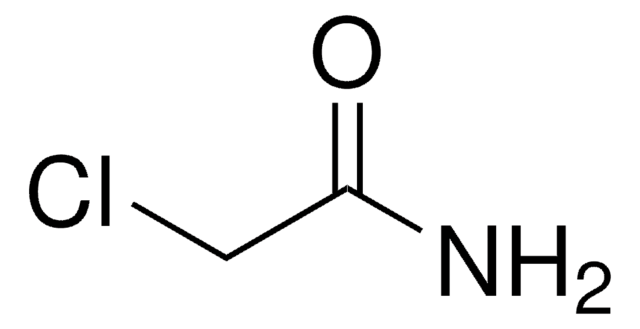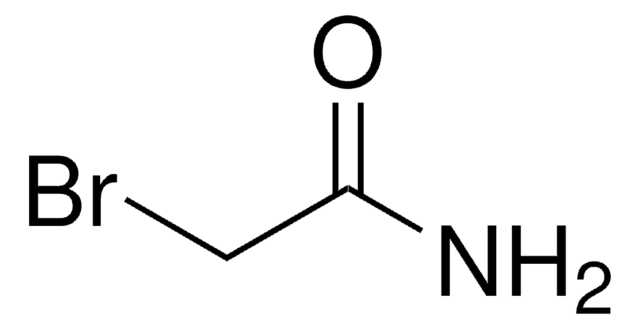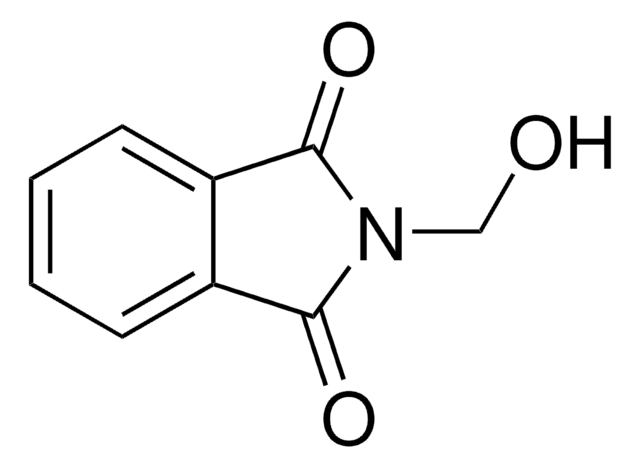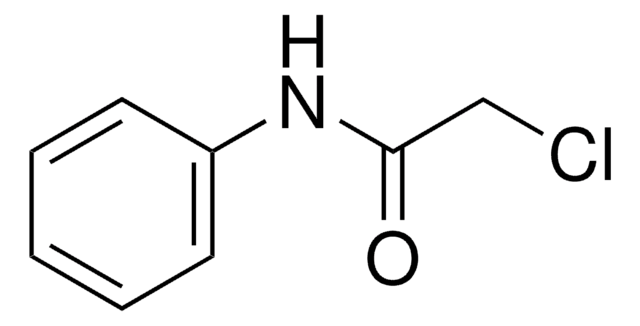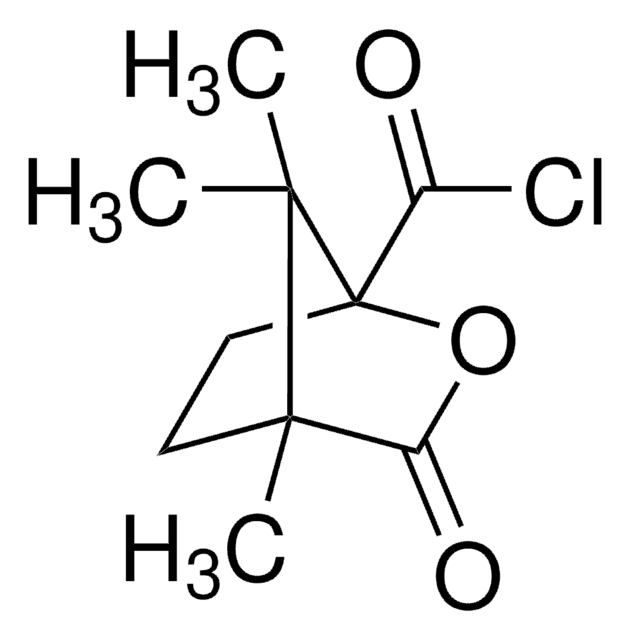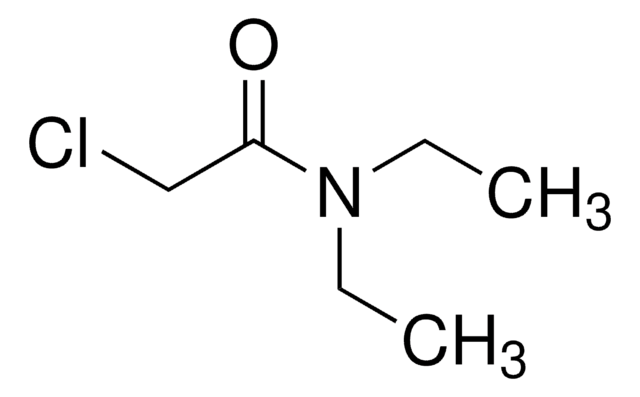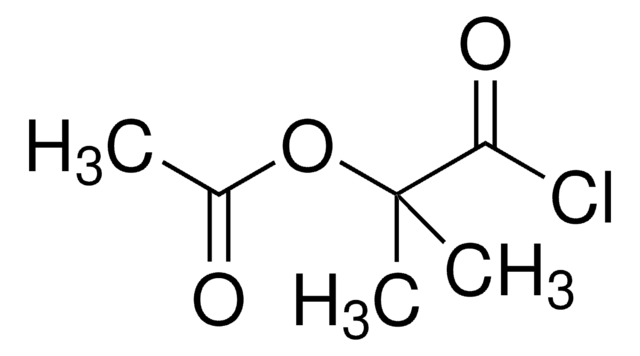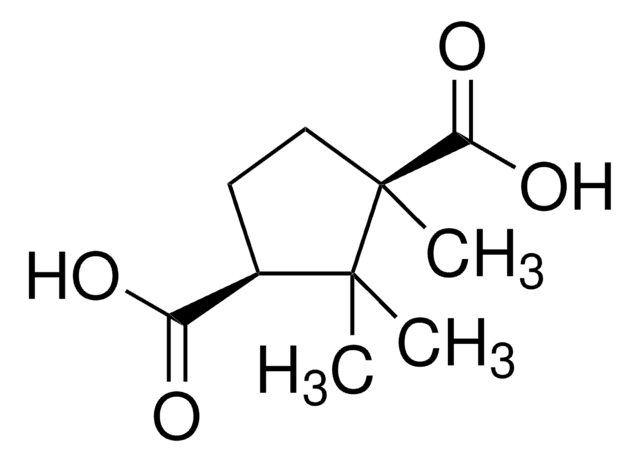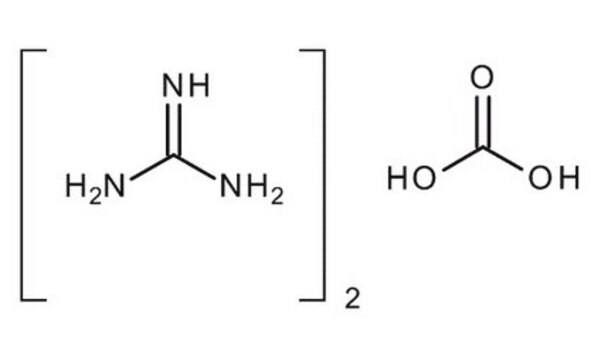All Photos(1)
About This Item
Linear Formula:
ClCH2CONHCH2OH
CAS Number:
Molecular Weight:
123.54
EC Number:
MDL number:
UNSPSC Code:
12352100
PubChem Substance ID:
NACRES:
NA.22
Recommended Products
Quality Level
Assay
98%
mp
100-105 °C (lit.)
SMILES string
OCNC(=O)CCl
InChI
1S/C3H6ClNO2/c4-1-3(7)5-2-6/h6H,1-2H2,(H,5,7)
InChI key
TXNSZCSYBXHETP-UHFFFAOYSA-N
Related Categories
General description
2-Chloro-N-(hydroxymethyl)acetamide (N-methylolchloracetamide) is a N-hydroxymethyl derivative of chloroacetamide. One of the method reported for its synthesis is by the reaction of 2-chloracetamide with formaldehyde. It has been reported to be a formaldehyde releaser and an infrequent sensitizer to formaldehyde contact allergy. Influence of short and prolonged exposure of 2-chloro-N-(hydroxymethyl)acetamide (as formaldehyde donor/releaser) on lymph node responses has been investigated.
Application
2-Chloro-N-(hydroxymethyl)acetamide (N-hydroxymethylchloroacetamide) may be used as a reagent in the synthesis of 1-(aminomethyl)-2-methoxynaphthalene hydrochloride and as a amidomethylating reagent for N,N-dialkylanilines (Tscherniac-Einhorn reaction).
Signal Word
Danger
Hazard Statements
Precautionary Statements
Hazard Classifications
Eye Dam. 1 - Skin Corr. 1B
Storage Class Code
8A - Combustible corrosive hazardous materials
WGK
WGK 3
Flash Point(F)
Not applicable
Flash Point(C)
Not applicable
Personal Protective Equipment
dust mask type N95 (US), Eyeshields, Gloves
Choose from one of the most recent versions:
Already Own This Product?
Find documentation for the products that you have recently purchased in the Document Library.
Allergic contact dermatitis from the preservative N-methylol-chloracetamide.
S Agren et al.
Contact dermatitis, 6(4), 302-303 (1980-06-01)
J Ashby et al.
Mutation research, 156(1-2), 19-32 (1985-04-01)
The industrial biocide chloracetamide-N-metholol (CAM) has been shown to be non-mutagenic to 6 strains of Salmonella using both the plate-incorporation and a pre-incubation test protocol. Its biocidal activity is unlikely to have influenced these results since Kathon 886, a more
Anton C de Groot et al.
Contact dermatitis, 61(2), 63-85 (2009-08-27)
This is one of series of review articles on formaldehyde and formaldehyde-releasers (others: formaldehyde in cosmetics, in clothes and in metalworking fluids and miscellaneous). Thirty-five chemicals were identified as being formaldehyde-releasers. Although a further seven are listed in the literature
Anton de Groot et al.
Contact dermatitis, 63(3), 129-139 (2010-06-25)
We have reviewed formaldehyde-releasers used in metalworking fluids (MWFs) in this and a previous part of a two-part article. These biocides do not appear to be frequent or important sensitizers. Even in highly selected patient groups of metalworkers, mean prevalence
The amidomethylation of some N, N-dialkylanilines (Tscherniac-Einhorn reaction).
Gale DJ and Wilshire JFK.
Australian Journal of Chemistry, 28(11), 2447-2458 (1975)
Our team of scientists has experience in all areas of research including Life Science, Material Science, Chemical Synthesis, Chromatography, Analytical and many others.
Contact Technical Service